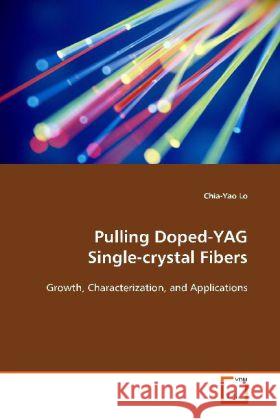Pulling Doped-YAG Single-crystal Fibers : Growth, Characterization, and Applications » książka
Pulling Doped-YAG Single-crystal Fibers : Growth, Characterization, and Applications
ISBN-13: 9783639122299 / Angielski / Miękka / 2009 / 116 str.
Pulling Doped-YAG Single-crystal Fibers : Growth, Characterization, and Applications
ISBN-13: 9783639122299 / Angielski / Miękka / 2009 / 116 str.
(netto: 208,74 VAT: 5%)
Najniższa cena z 30 dni: 218,66
ok. 10-14 dni roboczych
Dostawa w 2026 r.
Darmowa dostawa!
Pulling bulk crystal into fiber is suitable for dvice applications in optical communications because of its structural similarity to silica fiber. Among fiber growth techniques, the laser-heated pedestal growth method (LHPG) was adopted. It is crucible free and can therefore produce high-quality single crystals. However, interface loss of the fiber is one of the main causes of optical loss. In order to reduce the loss, a proper method to clad the fiber is important for high performance device. For laser application, high-efficient Nd:YAG lasers were demonstrated using gradient-index crystal fibers. For ASE and optical amplifier applications, Cr4+:YAG crystal fiber was studied due to its fluorescence just covering the low loss window of optical fiber. To reduce the fiber diameter and propagation loss, a novel cladding technique, codrawing LHPG, was developed. A double-clad fiber was successfully grown by the technique. As much as 2.36 mW of ASE with a bandwidth of 265 nm was demonstrated. Up to 16-dB of gross gain at 1470 nm was also achieved. It is the first transition metal-doped fiber amplifier in the optical communication band.











